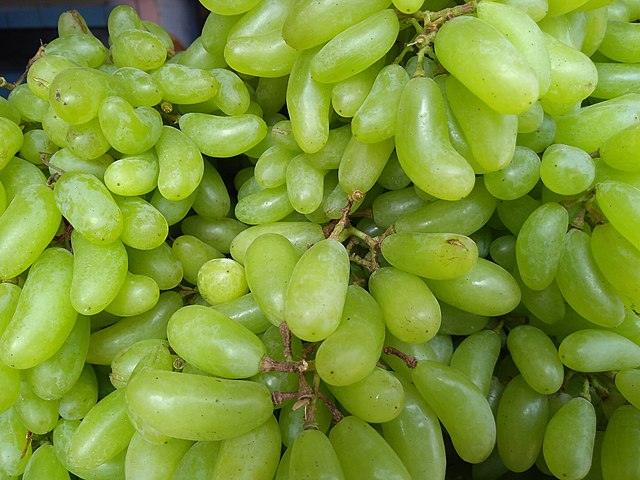Grapes and olives define New Year’s Eve in Spain and in 2025 people celebrated with the 12 grapes eating tradition.
From towns in Alicante province in southeastern Spain to Murcia and Madrid, residents on December 31, 2024 scrambled to eat all twelve fruits.
Consuming the fruits between the 12 strokes of the midnight bells apparently brings good luck in the twelve months ahead.
Conflicting reports on the origin of the celebration cite commercial interests, the copying of the French middle class and anti-aristocracy Madrid.
Regarding the commercial interest origin, Alicante’s grape growers apparently hatched the tradition in the 1880s to attract customers. To date, farmers from Alicante still contribute three-quarters of New Year’s grapes each holiday season.
Alternatively, the Spanish may have copied 19th century manners of the French bourgeoise of taking champagne and grapes before the New Year.
But the most credible theory is the linkage of the tradition to the resistance by the poor of Madrid against aristocrats. Before 1882, there had been a January 5 grape-eating festivity, which the aristocratic city authorities quashed by charging revery tax. Poor residents reiterated by pushing the celebration to the current tax-free December 31st date.
12 grapes Custom Accompanies Olive Glut
The 2025 “12 grapes” celebration is remarkable for coinciding with a recovering grape and olive sector after persistent drought.
By November 2024 as the olive harvest was ending, forecasters were projecting production at 4% above the past six-year average.
Key names that brought this glut included Andalusia on the southern border with the Atlantic. The province’s 1 million-tonne output, if realised, would represent 81% of the national total.
Meanwhile, central Spain’s Castilla-La Mancha expects a 2024 harvest improvement by 29% over that of 2023, to 140,000 tonnes.
Spain’s olive oil is also in the frontline after placing 59 out of 100 top honors in the 2024 Evooleum Guide.
Some of the oils in the frontline came from Cordoba, Madrid and Alacante, among other places, each with its special designation. Interestingly, despite these honors, Spain has had a rocky and pricey olive oil market through 2024.
So, from 12 lucky New Year’s grapes to an improving olive harvest, Spain is wishing itself some fruity luck in 2025. And as the following statistics indicate, the country needs much after longterm stagnation of the grape and olive sectors.
Spain Grape and Olive Statistics
Spain regularly ranks 4th in grape production worldwide after France, the U.S. and Italy. The southern European nation leads world production of olives and olive oil. In the early 2020s however, both grape and olive production have decreased somewhat. A combination of drought and other weather factors have contributed to the decline.
What are the recent historical grape production volumes in Spain?
Between 2012 and 2024, production has fluctuated sharply, culminating into a period low of 4,822,760 tonnes in 2023. The highest production years in the 2012-24 period were 2012 with 7,480,020 tonnes and 2018 with 6,980,000 tonnes, per Trading Economics data.
How much grapes do people in Spain eat?
According to Report Linker, locals in Spain ate 128,000 tonnes of grapes in 2021, the 29th highest worldwide. However, consumption could go down to 115,000 tonnes by the year 2026 as appetite shifts to other fruits.
How much olives does Spain produce annually?
Regarding total olive production, Spain leads the world with 5,101,010 tonnes, as of 2023, according to FAOSTAT. This is an improvement from the 2022 output of 3,940,070 tonnes.
Is olive oil production increasing or falling?
The International Olive Council cites that the 2023-24 season saw world olive oil production depreciate by 7% while the 2024-25 season expects a production rebound by 32%. In Spain’s case, the country led the world’s 2022 output at 665,709 tonnes, per FAOSTAT. This is a depreciation from the peak year 2018-19.
